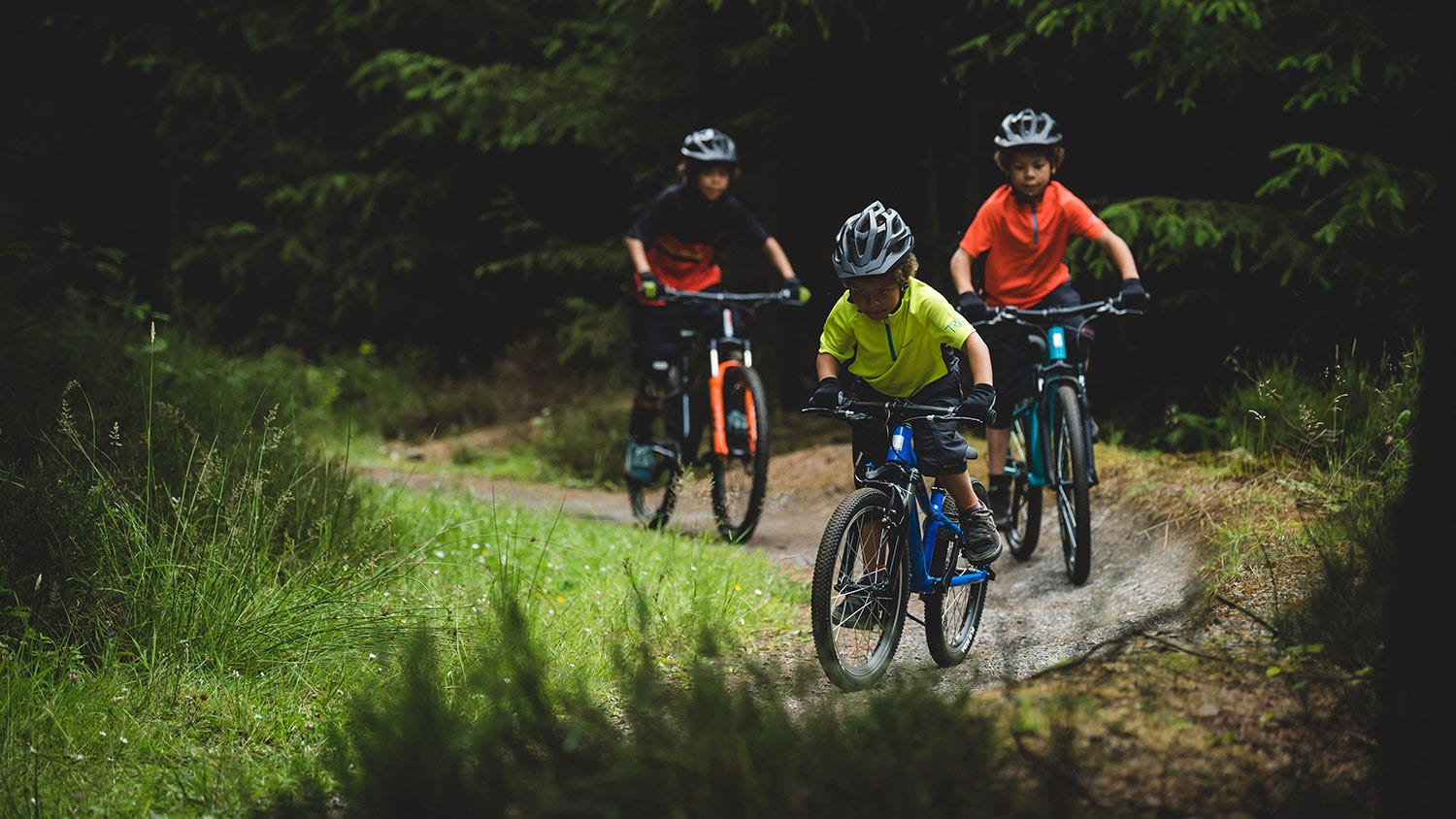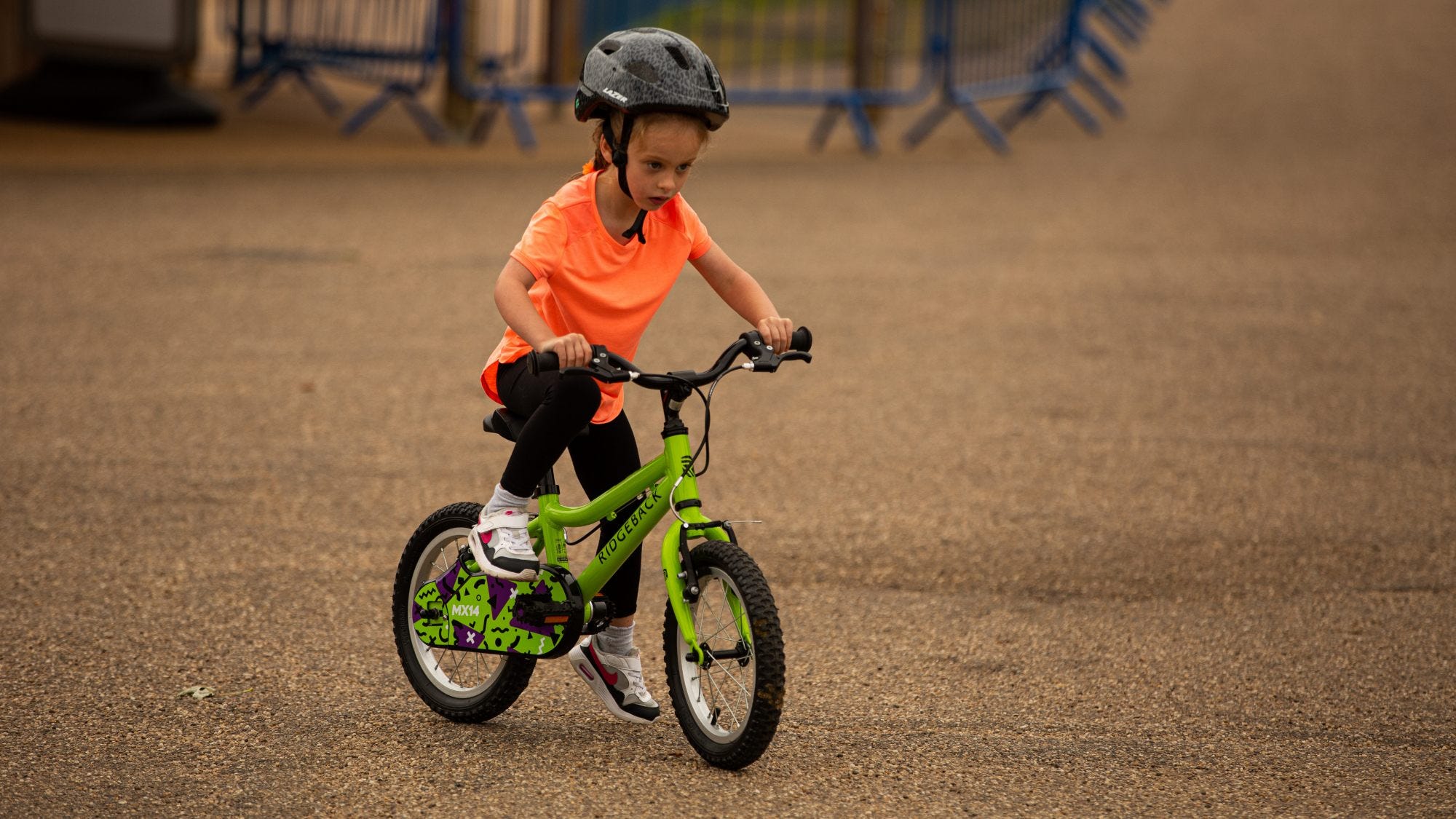Kids Bike Buying Guide
There has never been a time like the present to get your little’un riding and experiencing the thrill of being on two wheels. Bikes fuel kids’ imaginations, encourage them to explore the world and discover new things – not to mention expend their energies and take the workload off you a little.

Choosing the best bike for your child is a serious business. Get it wrong and you may just have a few tantrums on your hands. Luckily for you we’ve got this extensive buyer’s guide to help you choose the perfect bike. From sizing to fun, added features, we’ve got it all covered right here, making sure that your final decision puts the biggest smile on your child’s face…
Choosing the right size
Kids can grow in the blink of an eye and before you know it they’ll be on the lookout for an adult-sized bike to rival your prized racer. Before they get to that stage however you’ll want to kit them out with a few beginner bikes to really whet their appetite for cycling.
The biggest thing to think about when buying a beginner bike for your child is the size. Unlike adult bikes, kids’ bikes are sized on wheel diameter, rather than frame size and seat tube length.
Standard kids’ bikes start out with 12” wheels, and progress upwards to 24” wheels. Each size category is aimed at a different age bracket, which really helps when you’re whittling down your choices. Remember, however, the taller your child is the larger the wheel size they will need – no matter their age.
12” kids bikes – suitable for 2-4 years of age

This small size often includes balance bikes – bikes without pedals. These are fantastic introductory bikes that provide a great platform for your child to learn the ropes on.
They don’t have drivetrains and are instead propelled by your child’s feet in a scooting motion. They’ll teach your child all the fundamentals of riding a bike, like balance, coordination and steering, without letting them build up too much speed – keeping them safe.
14” kids bikes – suitable for 3-5 years of age

This is the next size up and the perfect bike to introduce the concept of pedals, brakes and a single speed drivetrain to your child. These bikes often come complete with stabilisers, but if your child has already learnt the ropes on a balance bike these can easily be removed.
With an exuberant and energetic rider to keep up with, these 14” wheel bikes are often designed with durability and weight in mind. The bike is light enough for your child to power along the tarmac, but strong enough to bounce back from the all too inevitable tumbles.
16” kids bikes – suitable for 4-6 years of age

These are your children’s growing years so it makes sense that the bike grows with them too! Much like the 14” kids bikes, these 16” wheel bikes are designed to be both lightweight and durable, able to withstand the monster power that your little’un is starting to lay down.
Gears are still waiting to be introduced, the main focus of these bikes is to get your child used to pedalling, balancing the bike and – most importantly – braking safely.
20” kids bikes – suitable for 5-8 years of age

These 20” wheel bikes introduce your child to the exciting, and oftentimes complicated, world of gears. They’re also incredibly robust and have a wide range of features, like V-brakes and fat tyres, which make them perfect for riding over all terrains – from tarmac to grassy trails.
24” kids bikes – suitable for 8 years and up

This marks the last stop before your child finally transitions into the adult bike category. They’re essentially just mini versions of an adult bike, sporting all of the same features that make it so adept at riding over mixed and variable terrains such as front suspension, disc brakes and a one-by, rapid-shifting drivetrain.
Kids’ road bikes can also be found in this 24” wheel size category. These bikes have drop handlebars, like an adult road bike, but shorter cranks and reach to make them more suitable for smaller bodies.
There are also 26" bikes designed for smaller riders but as not too long ago 26" wheels where the standard in mountain biking, these are more teenager/small adult bikes.
Once you’ve narrowed down which is the most appropriate wheel size, you can then start looking at seat heights and stand over heights.
On a first-time pedal bike, you should set the seat height to match your child’s inside leg, giving them the ability to easily stop and regain their balance with their feet. As they start to learn and grow more confident, you can begin to raise this a little to allow for proper leg extension when pedalling. The easiest way to measure this is have your child sit on the seat and reach for the ground with their toes. If they can just about stand on their tiptoes, the seat height is perfect.
Standover height is another important factor to consider, particularly when you’re purchasing a 20” or 24” kids bike. The standover height is the distance from the top tube of the frame to the ground, measured from just in front of the seat.
frame size should allow your child to easily stand over the bike, flat footed, with at least an inch or two of clearance to the top tube.
Seat height and standover height are hard things to measure, so it’s often best to bring your child into the store and have them try out a number of different sizes to see which one fits and feels best.
Things to look out for
Kids’ bikes are often pretty simple, kitted out with as few features as possible to make riding and having fun that little bit easier. As your child starts to grow up and become more experienced on the bike however they may start asking for a few more features – these are important things to look out for.
Suspension is fantastic, especially as your child enters their pre-teen years and starts to explore the world of mountain biking. A lot of 24” and 26" wheel bikes come with a degree of front suspension, designed to absorb trail buzz and chatter. It’s not going to fully absorb big hits and jumps, but it will make off-road riding a lot more comfortable.
If your child is just starting out, you might want to try and avoid bikes with suspension. It adds extra weight and often children aren’t heavy enough in the upper body for it to work properly.
Another thing to look out for is gearing. A lot of kids’ bikes come with a single speed drivetrain, which is ideal for learning to ride and pedal on, but not so great if your child develops a love for riding up hills. As they get older and develop a little more power, consider getting them a bike with more gears, perhaps even a double chainring. It may add a little more weight and complication, but it’ll give them the tools they need to conquer harder and more challenging terrain.
Brakes are a big feature to look out for, especially as your kids start to grow a little bit older and inevitably faster. Most bikes come with reliable V-brakes and ergonomic, child-specific brake levers, allowing your child to operate the brakes safely and efficiently. If you want to step the safety aspect up a notch, or if your child wants to ride over more technical terrain, then consider a bike with disc brakes – these brakes are top of the pile when it comes to stopping power.
Finally, pay attention to the weight of the bike that you’re buying for your child and don’t be lured into buying a bike for your child to ‘grow into’. The bike you buy needs to be the right size and weight for your child in the present; anything more, or less, and it’ll be too difficult and uncomfortable for them to operate.
Encouraging safe cycling
As a parent, it’s your duty to encourage safe cycling right from the off. When buying your child’s first bike, you’ll also want to grab these things too:
-
A helmet– without a doubt the most important piece of safety equipment. Make sure it fits your child’s head correctly and isn’t too tight. One with an adjustable strap and tightening system is perfect as it’ll stay with them as they grow.
-
Lights and reflectors– not only do these look cool while they’re riding at night, they also keep your child safe and seen.
-
A bell– these are great for teaching your child how to be courteous and polite while riding, as well as providing a means for them to announce themselves as they come charging through the park gates.
Do your research
With kids’ bikes being so simple, we can often be tricked into buying them straight from the shelf with very little thought or care. This buyer’s guide has shown you just how far from the truth that is – buying a bike for your child is often just as complicated as buying one for yourself!
The more time you spend deliberating and comparing different bikes, the better the final decision will be. Feel free to come down to one of our stores with your kids and see which bikes suit them best; it’s often the best way to find the perfect size, as well getting them excited and passionate about cycling.
Be sure to take a look at our wide range of kids bikes right here. There’s definitely one there with your child’s name on!
